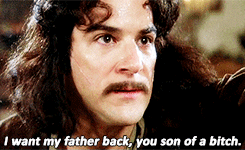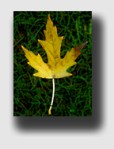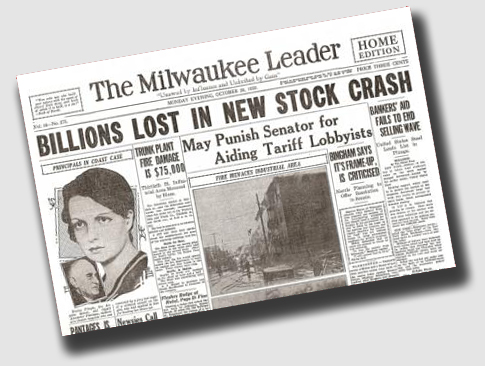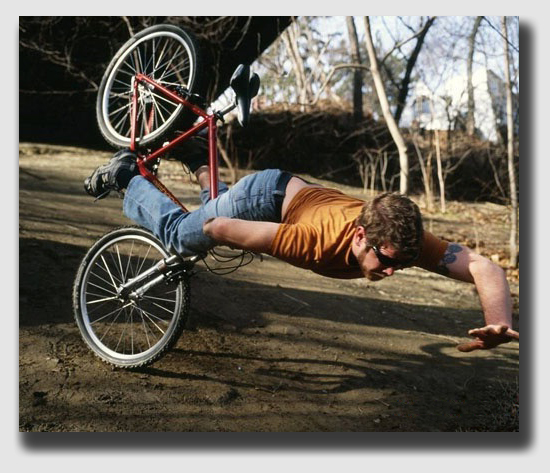I WANT MY TREES BACK…
A long, long time ago, before I was trained to think like a lawyer, I was a neophyte law student and still thinking like a layman, that is to say, “normally.” New law students are first exposed to contract law. Digging into Basic Contract Law, that boring-looking brown tome that was chock-a-block with fascinating cases, I very quickly ran into Peevyhouse v. Garland Coal Co. (on the second day of class, I recall).
Farmer Peevyhouse signed a deal with Garland Coal Co., to strip mine his land. The land was hilly, and Farmer P thought the strip mining was the ideal time to fix that. So he got Garland Coal to agree to level the land when the company was done strip mining.

Garland Coal left a lot of hills behind…
When the coal was gone, so was Garland Coal, leaving the farm just as hilly as it was before the mining. Farmer Peevyhouse sued for breach of contract. He won, of course, but when it came to figuring damages, the court noted that the diminution in value of the farm because it was still hilly (as opposed to flat) was only about $5,000. But if Garland Coal were required to come back to keep its promise to level the place, Garland Coal would have to spend $25,000 to pull it off. The higher award would constitute economic waste, the court held, and the court was not about to be wasteful with the coal company’s money.
Back then, as a tyro-at-law, I couldn’t understand the decision. Who cared if the damages were wasteful, or if the market value of the farm was only slightly less? To me, Farmer Peevyhouse made a deal, Garland Coal agreed to the deal, and – inasmuch as Garland got all the coal it bargained for – Farmer P should get what he bargained for as well, economics be damned. To me, the economics did not matter nearly as much as did the reasonable expectations of the parties.
Now, with many years of practice under my belt, I tend to think like a lawyer. But Peevyhouse still makes no sense to me. The farmer would not have let Garland Coal strip his land without the promise to level the hills. So the promise was material to the farmer. Why reward Garland Coal simply because Mr. Peevyhouse’s legitimate desires might not make great economic sense?
 In The Princess Bride, Inigo Montoya ends his years-long quest to avenge his father’s untimely death in a fight to the death with the six-fingered man. At last, Montoya has the tip of his sword at Count Rugan’s throat:
In The Princess Bride, Inigo Montoya ends his years-long quest to avenge his father’s untimely death in a fight to the death with the six-fingered man. At last, Montoya has the tip of his sword at Count Rugan’s throat:
Inigo Montoya: Offer me money.
Count Rugen: Yes!
Inigo Montoya: Power, too, promise me that.
Count Rugen: All that I have and more. Please…
Inigo Montoya: Offer me anything I ask for.
Count Rugen: Anything you want…
[Rugen knocks Inigo’s sword aside and lunges. But Inigo traps his arm and aims his sword at Rugen’s stomach]
Inigo Montoya: I want my father back, you son of a bitch!
That, on a less dramatic level, was Paul Harder’s complaint. As we read in yesterday’s installment on this case, while Paul was gone from Alaska, Joel and Darlene Wiersum clear-cut his land without permission in order to improve their view. In seeking money to restore his property – a sum that came to something like four times the fair market value of his land before the clear-cutting – Paul told the jury he “didn’t want money,” but rather he only wanted his trees back. Paul, therefore, asked for damages to restore the property by replanting the forested area.
Count Rugen could give Inigo money and power and land. But he could not give Inigo what he wanted the most, a desire that was heartfelt if utterly infeasible (and rather uneconomical). In that regard, Inigo Montoya and Farmer Peevyhouse had something in common. The question is whether they both had something in common with Paul Harder. We’ll find that out now…
Wiersum v. Harder, 316 P.3d 557 (Alaska, 2013). Paul Harder owned a pretty nice piece of Alaskan wilderness near Kodiak. He built a cabin on it and lived happily for quite a stretch. But when wanderlust set in, he subdivided the land, sold the plot with the cabin on it to his sister Lisa and kept one for himself, and left for a 15-year sojourn in warmer climes.
Paul lived in Hawaii but returned to visit his plot of land occasionally and enjoy the hunting, fishing and recreation opportunities it afforded.
About nine years after Paul went south, Joel and Darlene Wiersum bought some land at the top of a hill, adjacent to the Harder tracts. Looking down the hill, they could see Lisa’s cabin several hundred yards below, and incorrectly assumed she owned it all. One day, Darlene called Lisa at work and asked whether they could cut down some trees on Lisa’s property that Darlene thought might “come down with the wind” and hit their home. Lisa gave them permission because she thought the removal of some trees would “let a little more light in” to the woods.
Darlene and Joel did not just thin out a few hazard trees. Instead, they clear-cut the entire hill, out to almost 400 feet beyond their property line. When Lisa returned home to find that bare naked hillside, she told the Wiersums not to cut any more trees.
When Paul returned a couple of years later, he discovered the clear-cut hillside (which really was on his plot, not that of his sister), and promptly sued the Wiersums for timber trespass. A jury him $161,000 in compensatory restoration damages, which was trebled under Alaska statute AS 09.45.730.
The Wiersums appealed.
 Held: The jury’s restoration damage award was reversed and sent back for retrial.
Held: The jury’s restoration damage award was reversed and sent back for retrial.
A party who is injured by an invasion of his or her property that does not totally destroy its value may choose as damages either the loss in property value or “reasonable restoration costs.” To determine whether an award of restoration costs is appropriate, Alaska follows the Restatement (Second) of Torts § 929. The Restatement says if a plaintiff is entitled to damages for harm to land resulting from a trespass that does not amount to a total destruction of value, the damages include either (1) the difference between the value of the land before the harm and the value after the harm, or – if the plaintiff so chooses – the cost of restoration that may be reasonably incurred. Damages are measured by the difference between the value of the land before and after the harm only if the cost of restoring the land to its original condition is disproportionate to the loss in the value of the land caused by the trespass “unless there is a reason personal to the owner for restoring the original condition.”
That’s the law for you. A layman untrained in legal niceties would say “a personal reason,” but the legal phrase is a “reason personal.” The distinction is intended to convince you that the law must be complex, and thus you ought to pay that “bill inflated” your lawyer hands you without a whimper.
A “reason personal,” the Court said, is a reason peculiar or special to the owner, where “the owner holds property primarily for use rather than for sale and where the owner is likely to make repairs with the restoration costs award rather than to pocket the funds and enjoy a windfall.” For example, the Court in the past had found a “reason personal” where the damaged property was used by the plaintiff as “a showplace in connection with his nursery business” and, in another case, where the property enjoyed “unique views… abundant trees, and the unusual juxtaposition of the trees, the cabin, and the views,” and its owners, who planned to retire on the property, had testified that “other properties in the area were not comparable.”
To find that a plaintiff had a “reason personal” for restoration, where those costs were much higher than the loss of value to the land, a court should look for evidence showing “a reasonable likelihood that the trees would be restored.”
 Paul showed at trial that he held on to the Monashka property for 34 years and that he intended to build a house and live on it once his son graduated from college because “it’s a very beautiful piece of property.” A real estate agent testified that he approached Paul about selling the land, but Paul had refused. Paul testified he “didn’t want money,” but rather he only “wanted his trees back” and was asking for damages to restore the property by replanting the forested area. He said he enjoyed spending time with his children on the property, but that after the trees were cut down, the property “looked totally different,” full of salmonberry bushes… whereas it was just like thick moss before,” and he reported that he had not heard any ravens there since the trees were cut.
Paul showed at trial that he held on to the Monashka property for 34 years and that he intended to build a house and live on it once his son graduated from college because “it’s a very beautiful piece of property.” A real estate agent testified that he approached Paul about selling the land, but Paul had refused. Paul testified he “didn’t want money,” but rather he only “wanted his trees back” and was asking for damages to restore the property by replanting the forested area. He said he enjoyed spending time with his children on the property, but that after the trees were cut down, the property “looked totally different,” full of salmonberry bushes… whereas it was just like thick moss before,” and he reported that he had not heard any ravens there since the trees were cut.
The Wiersums argued the award of restoration damages was objectively unreasonable because the total market value of Paul’s property before the timber trespass was only $40,000. A damage award of $161,000, they contended, was disproportionate to the property’s diminution. Besides, peripatetic Paul’s “minimal use of and contribution to the land’s special value would at most justify a marginal award of restoration costs.”
The Court noted it had found in the nursery case that restoration damages were not “grossly disproportionate” where the owner had paid $4,000 per acre for the property, but the jury awarded $12,550 for restoring a quarter-acre of land. Because the principal value of the property stemmed from the creek running through it, and the owner intended to use the property to create “a showplace in connection with his nursery business,” the cost of restoration, although disproportionate to value, was reasonable. Nevertheless, the Court had previously cautioned that “restoration costs exceeding diminished market value may be awarded only to the extent such added costs are objectively reasonable in light of the ‘reason personal’ and in light of the diminution in value.”
 The “reason personal” may be a non-commercial one based on the property’s uniqueness, but the restoration award must be limited to the cost that has been or may be reasonably incurred. The reason for this rule, the Court said, is “to reduce the economic waste that occurs when a party incurs repair costs in excess of the diminished value of the property.” The application of this principle “must ensure that an award of restoration damages does not confer a windfall upon a landowner.” Where proposed replacement costs are excessive in relation to the damage caused by the trespass, “the achievement of a reasonable approximation of the land’s former condition may involve something less than substantially identical restoration… It may be more appropriate to award costs for the planting of saplings, or a few mature trees, or underbrush to prevent erosion and achieve a lesser but, over time, reasonable aesthetic restoration.”
The “reason personal” may be a non-commercial one based on the property’s uniqueness, but the restoration award must be limited to the cost that has been or may be reasonably incurred. The reason for this rule, the Court said, is “to reduce the economic waste that occurs when a party incurs repair costs in excess of the diminished value of the property.” The application of this principle “must ensure that an award of restoration damages does not confer a windfall upon a landowner.” Where proposed replacement costs are excessive in relation to the damage caused by the trespass, “the achievement of a reasonable approximation of the land’s former condition may involve something less than substantially identical restoration… It may be more appropriate to award costs for the planting of saplings, or a few mature trees, or underbrush to prevent erosion and achieve a lesser but, over time, reasonable aesthetic restoration.”
Applying these principles to Paul’s denuded hillside, the Court held that the award of $161,000 in restoration costs was objectively unreasonable in light of the $40,000 pre-trespass total value of the property. Paul’s “reason personal” for restoration, and the absence of any proof of the extent of the decrease in the value of his property, made it more appropriate to award costs “for the planting of saplings or a few mature trees or underbrush to prevent erosion and achieve a lesser but, over time, reasonable aesthetic restoration.” The Court’s conclusion was based on its determination that the “property could be reasonably restored by replacing at least some of the mature Sitka spruce with saplings or smaller trees and that because the property’s large trees were growing in a forested environment where the root zones were intertwined” it was not possible to ” replace that exact tree in that environment.”
The jury must base its award on a finding that the restoration costs were objectively reasonable in light of the value of Paul’s land, the loss of value due to the Wiersums’ trespass, and his “reason personal.” Here, the Court said, no reasonable juror would award restoration costs totaling more than four times the full fair market value of the property before the trespass. Thus, the Court sent the case back for a new trial on damages.
And what’s my take on this case, based upon my decades of thinking like a lawyer? I’m with Inigo Montoya and Paul Harder: “I want my trees back, you son-of-a-bitch,” and economics be damned.
This is a bad decision.
– Tom Root

 You think you got it bad, 2022ers? Your crypto investments have put the ‘bite’ in Bitcoin? Nest egg starting to smell a little trotten?
You think you got it bad, 2022ers? Your crypto investments have put the ‘bite’ in Bitcoin? Nest egg starting to smell a little trotten?  The Court of Appeals also concurred that the fact the tree had died of natural causes, rather than because of Brandywine’s conduct, had no effect on the realty company’s duty. Regardless of how the tree ended up in a condition of “deadness,” if its deadness was known by Brandywine or could have been known “by the exercise of ordinary case … then it became the duty of the defendant to exercise reasonable care and diligence to prevent the tree from falling and injuring those who might have occasion to use the public highway.”
The Court of Appeals also concurred that the fact the tree had died of natural causes, rather than because of Brandywine’s conduct, had no effect on the realty company’s duty. Regardless of how the tree ended up in a condition of “deadness,” if its deadness was known by Brandywine or could have been known “by the exercise of ordinary case … then it became the duty of the defendant to exercise reasonable care and diligence to prevent the tree from falling and injuring those who might have occasion to use the public highway.”

























